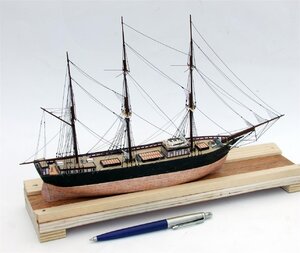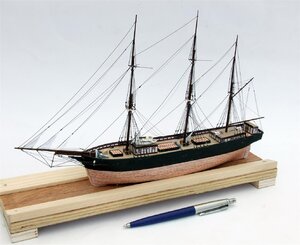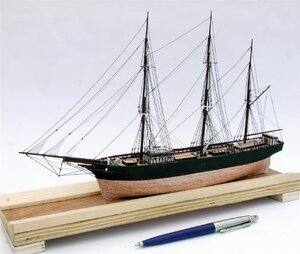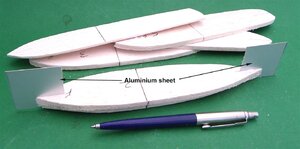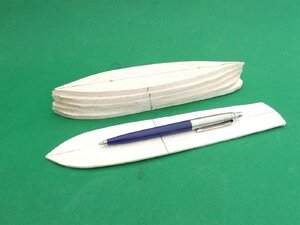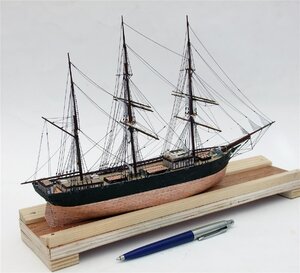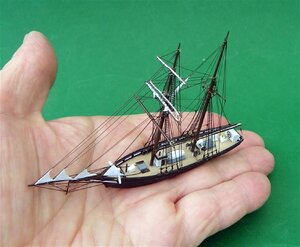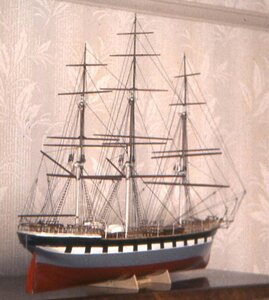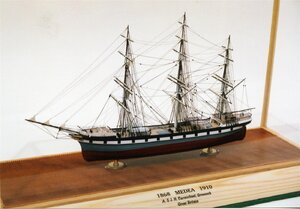- Joined
- Jun 30, 2012
- Messages
- 1,418
- Points
- 433

Friday, 8th May, 2020
900-ton barque
Over the past few days, I have made quite a lot of deadeyes, that was rather tedious. Then I completed and fitted all the shrouds and ratlines on all three lower masts. This involved soldering a pair of deadeyes on the bottom of each shroud - a total of 28 pairs of deadeyes. Then I completed the running rigging on the mizzen boom and gaff. That was quite a trial, as I can't really see as well I did a few years ago close-up, but at 76, I suppose one has to accept certain ageing processes, but I can manage OK with the aid of a head band magnifier. The topmast shrouds and ratlines have also been made, but require 16 pairs of deadeyes to be soldered to them before I fit them. After that, I will need to make the t'gallant shrouds and ratlines, another tedious job. So far, I have made well over 500 soldered joints in the work already done. But after they are complete, the rest of the rigging will just be glued on, so things should get easier, or less tedious, I should say! The images, incidentally, were taken using a short tripod, with camera settings at 100 ISO, F8, at 1/60th of a second. Shutter actuated by 2-second delay timer. The background was a piece of curved white card to eliminate the junction between vertical and horizontal. I was never too keen on the ever-popular crumpled sheet background!
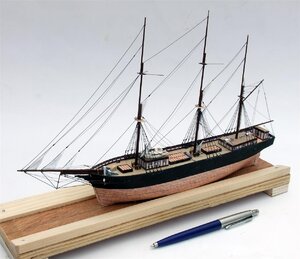
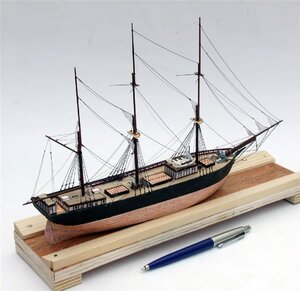
900-ton barque
Over the past few days, I have made quite a lot of deadeyes, that was rather tedious. Then I completed and fitted all the shrouds and ratlines on all three lower masts. This involved soldering a pair of deadeyes on the bottom of each shroud - a total of 28 pairs of deadeyes. Then I completed the running rigging on the mizzen boom and gaff. That was quite a trial, as I can't really see as well I did a few years ago close-up, but at 76, I suppose one has to accept certain ageing processes, but I can manage OK with the aid of a head band magnifier. The topmast shrouds and ratlines have also been made, but require 16 pairs of deadeyes to be soldered to them before I fit them. After that, I will need to make the t'gallant shrouds and ratlines, another tedious job. So far, I have made well over 500 soldered joints in the work already done. But after they are complete, the rest of the rigging will just be glued on, so things should get easier, or less tedious, I should say! The images, incidentally, were taken using a short tripod, with camera settings at 100 ISO, F8, at 1/60th of a second. Shutter actuated by 2-second delay timer. The background was a piece of curved white card to eliminate the junction between vertical and horizontal. I was never too keen on the ever-popular crumpled sheet background!






